The story of Mark Clarke and his bullying of young Conservative Party activist Elliott Johnson to suicide is horrifying. While I’m sure there are people with a sense of schadenfreude at internal problems within the Tory party, that’s an entirely wrong reaction. Anyone with a shred of empathy should feel for Elliott Johnson and his grieving parents. It’s not as though destructive bullies are confined to any one party; look at the behaviour of the late Cyril Smith in the Liberals. Politics is particularly vulnerable to these sorts of charismatic sociopaths, and all too often people overlook the harm these sorts of people can do.
I am struck by the parallels between Mark Clarke and the individual within the Science Fiction community who went under the name of “Requires Hate”. Both showed the amount of damage a manipulative sociopath in a position of influence can do to an organisation or community.
There are differences of course; Clarke was a public figure and some of his bullying took the form of public confrontations, while Requires Hate was an anonymous internet presence whose true identity wasn’t publicly known at the time.
But they had a lot in common too. Clarke embedded himself in a influential position in a estabilshed power structure, while Requires Hate constructed an extensive web of acolytes and sycophants in a community that lacked a formal hierarchy. Both used malicious false allegations and threats of blackmail as a weapon, and both ruthlessly gamed the rules of the social systems they were part of. And neither would admit their wealthy and privileged backgrounds; Clarke spun a fiction about growing up on a council estate, while Ms Hate wore her minority status on her sleeve while neglecting to mention that she was a scion of one of Thailand’s most wealthy and powerful families.
It’s easy to say that organisations and communities should get better at seeing through these sorts of people, but that’s far easier said than done. It’s much harder to spot a bad actor when they appear to share your own values.
 Bad news for London’s live music scene. One of the city’s important medium-sized venues
Bad news for London’s live music scene. One of the city’s important medium-sized venues  A quite remarkable record that sounds like all the best bits of contemporary metal and progressive rock from the last decade put into a blender. It’s hugely varied with musical references all over the place, yet it still hangs together as a coherent whole. There is an awful lot happening on this record, and it does take a few listens to take it all in. Songs take off in unpredictable directions, and there is more than one number that feels as though it contains a whole concept album’s worth of music in seven or eight minutes.
A quite remarkable record that sounds like all the best bits of contemporary metal and progressive rock from the last decade put into a blender. It’s hugely varied with musical references all over the place, yet it still hangs together as a coherent whole. There is an awful lot happening on this record, and it does take a few listens to take it all in. Songs take off in unpredictable directions, and there is more than one number that feels as though it contains a whole concept album’s worth of music in seven or eight minutes.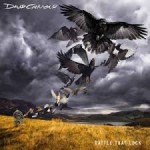 This highly polished singer-songwriter album is perhaps more satisfying that Pink Floyd’s coda “The Endless River”. Though it does tend towards the middle of the road in places, Gilmour’s immediately recognisable lead guitar lights up every song and sets this record apart. While it doesn’t reach the epic grandeur of Pink Floyd’s heyday. it’s still as much about the gorgeous orchestrated arrangements as it is about the songs.
This highly polished singer-songwriter album is perhaps more satisfying that Pink Floyd’s coda “The Endless River”. Though it does tend towards the middle of the road in places, Gilmour’s immediately recognisable lead guitar lights up every song and sets this record apart. While it doesn’t reach the epic grandeur of Pink Floyd’s heyday. it’s still as much about the gorgeous orchestrated arrangements as it is about the songs.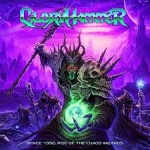 Dundee’s finest power-metallers return with the follow-up to “Tales from the Kingdom of Fife” in which the hero Angus McFife takes the battle with the evil sorcerer Zargothrax to outer space, where he encounters The Goblin King of the Darkthrone Galaxy, and with the aid of the legendary Astral Hammer and The Hollywood Hootsman defeats the sorcerer in epic battle. Unfortunately Earth and all its inhabitants were destroyed in the process, but nobody noticed because Chaos Magic. But that’s power metal for you…
Dundee’s finest power-metallers return with the follow-up to “Tales from the Kingdom of Fife” in which the hero Angus McFife takes the battle with the evil sorcerer Zargothrax to outer space, where he encounters The Goblin King of the Darkthrone Galaxy, and with the aid of the legendary Astral Hammer and The Hollywood Hootsman defeats the sorcerer in epic battle. Unfortunately Earth and all its inhabitants were destroyed in the process, but nobody noticed because Chaos Magic. But that’s power metal for you…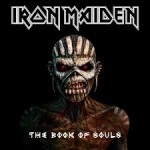 The metal veterans and British institution continue a strong recent run of albums with one of the most ambitious things they’ve ever done, a double album that might just be their best record they’ve made since their 1980s heyday. They’ve managed a double album without filler, covering all bases from galloping rockers to ambitious epics. It culminates with “Empire of the Clouds”, an eighteen-minute tour-de-force which combines Bruce Dickenson’s loves of history and aviation, telling the story of the ill-fated maiden voyage of the R101 airship.
The metal veterans and British institution continue a strong recent run of albums with one of the most ambitious things they’ve ever done, a double album that might just be their best record they’ve made since their 1980s heyday. They’ve managed a double album without filler, covering all bases from galloping rockers to ambitious epics. It culminates with “Empire of the Clouds”, an eighteen-minute tour-de-force which combines Bruce Dickenson’s loves of history and aviation, telling the story of the ill-fated maiden voyage of the R101 airship. Lemmy’s increasingly frail health means Motörhead aren’t the live force they once were, but in the studio it’s another matter. Lemmy has still got it, and accompanied by Mikky Dee and the underrated Phil Campbell, they rock like a bastard, with songs that barrel along like a runaway train. On record at least, with what might prove to be their final album, Motorhead are still the epitome of the primal spirit of Rock’n'Roll, Britain’s equivalent to The Ramones.
Lemmy’s increasingly frail health means Motörhead aren’t the live force they once were, but in the studio it’s another matter. Lemmy has still got it, and accompanied by Mikky Dee and the underrated Phil Campbell, they rock like a bastard, with songs that barrel along like a runaway train. On record at least, with what might prove to be their final album, Motorhead are still the epitome of the primal spirit of Rock’n'Roll, Britain’s equivalent to The Ramones. Napalm Death are very angry. It’s hard to make out the words, so it’s not always obvious exactly what they’re angry about, but they’re very, very angry. They combine the visceral fury of punk with the precision of metal, to produce an album that tears out of the speakers and nails you to the wall. Napalm Death show absolutely no signs of mellowing in their old age, and they’ve made a record that’s utterly uncompromising.
Napalm Death are very angry. It’s hard to make out the words, so it’s not always obvious exactly what they’re angry about, but they’re very, very angry. They combine the visceral fury of punk with the precision of metal, to produce an album that tears out of the speakers and nails you to the wall. Napalm Death show absolutely no signs of mellowing in their old age, and they’ve made a record that’s utterly uncompromising. The former Genesis guitarist has gained a high profile with his Genesis revival show of late, but he’s also hit a late career purple patch with a string of excellent albums, of which this might be one of the finest. It’s a huge symphonic-sounding work, dominated by his distinctive liquid guitar playing and gorgeous harmony vocals. Just ignore the cover art with the embarrassed wolves and focus on the music.
The former Genesis guitarist has gained a high profile with his Genesis revival show of late, but he’s also hit a late career purple patch with a string of excellent albums, of which this might be one of the finest. It’s a huge symphonic-sounding work, dominated by his distinctive liquid guitar playing and gorgeous harmony vocals. Just ignore the cover art with the embarrassed wolves and focus on the music. State of the art twin-guitar prog-metal from Australia, filled with serpentine riffs, memorable vocal melodies and some spectacular soloing. It combines the dynamics of mid-period Opeth with the modern jazz-metal experimentation of Haken and Maschine with the atmospherics of Riverside, while managing to avoid sounding remotely derivaive.
State of the art twin-guitar prog-metal from Australia, filled with serpentine riffs, memorable vocal melodies and some spectacular soloing. It combines the dynamics of mid-period Opeth with the modern jazz-metal experimentation of Haken and Maschine with the atmospherics of Riverside, while managing to avoid sounding remotely derivaive. The Swedish power-trio deliver some classy blues-based hard rock. There’s an emphasis on tight arrangements, with punchy songs and short but effective blasts of shredding lead guitar, with a superb production that makes it sound as though the band are playing in your living room.
The Swedish power-trio deliver some classy blues-based hard rock. There’s an emphasis on tight arrangements, with punchy songs and short but effective blasts of shredding lead guitar, with a superb production that makes it sound as though the band are playing in your living room.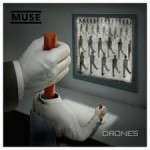 Teignmouth’s finest take a step back from the Queen-with-kitchen-sinks approach of their last couple of albums in favour of something of stripped-down guitar-driven power trio approach of their early albums. But when you’ve got Mutt Lange of AC/DC fame as producer, “stripped-down” is still a relative thing. There’s still a big expansive sounds that goes from hard rock boogie to a nod to spaghetti western soundtracks. This is still a Muse album, after all.
Teignmouth’s finest take a step back from the Queen-with-kitchen-sinks approach of their last couple of albums in favour of something of stripped-down guitar-driven power trio approach of their early albums. But when you’ve got Mutt Lange of AC/DC fame as producer, “stripped-down” is still a relative thing. There’s still a big expansive sounds that goes from hard rock boogie to a nod to spaghetti western soundtracks. This is still a Muse album, after all. Not many people would have put “The Pope releases bonkers prog-rock album” in their musical predictions for 2015. One of the years strangest releases mixes excepts from sermons with a blend of traditional church music and progressive rock with a nod to world music. The combination of spoken word with big minor-key choral crescendos and the occasional blast of full-on rock guitar is worth a listen for anyone who appreciates things like Mostly Autumn’s “The Gap Is Too Wide”. It certainly makes evangelical protestant worship music look tame by comparison.
Not many people would have put “The Pope releases bonkers prog-rock album” in their musical predictions for 2015. One of the years strangest releases mixes excepts from sermons with a blend of traditional church music and progressive rock with a nod to world music. The combination of spoken word with big minor-key choral crescendos and the occasional blast of full-on rock guitar is worth a listen for anyone who appreciates things like Mostly Autumn’s “The Gap Is Too Wide”. It certainly makes evangelical protestant worship music look tame by comparison.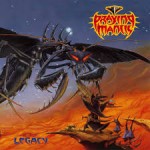 The tenth album by one-time NWOBHM heroes is polished twin-guitar hard rock, more AOR than metal, with echoes of Uriah Heep and Journey. Remarkable in its consistency, there is no filler and every track has something to like about it. Just occasionally it skirts on the edge of cheese, but most of the time this is a classy piece of work.
The tenth album by one-time NWOBHM heroes is polished twin-guitar hard rock, more AOR than metal, with echoes of Uriah Heep and Journey. Remarkable in its consistency, there is no filler and every track has something to like about it. Just occasionally it skirts on the edge of cheese, but most of the time this is a classy piece of work. With new vocalist Todd Le Torre the prog-metal pioneers recover some of their mojo, with a record that evokes the spirit of the 1980s heyday, with soaring vocals and razor-sharp riffs. It doesn’t quite reach the heights of their peerless 80s masterpieces, but it’s still the best thing they’ve done for many years, and certainly blows Geoff Tate’s lacklustre album “The Key” clean out of the water.
With new vocalist Todd Le Torre the prog-metal pioneers recover some of their mojo, with a record that evokes the spirit of the 1980s heyday, with soaring vocals and razor-sharp riffs. It doesn’t quite reach the heights of their peerless 80s masterpieces, but it’s still the best thing they’ve done for many years, and certainly blows Geoff Tate’s lacklustre album “The Key” clean out of the water.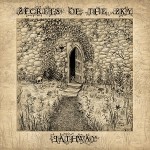 This Californian band brew up a monstrous wall of sound. With no choruses or solos the songs take the form of dense soundscapes of layered guitars, doom-laden drums and washes of keys. With evil-sounding growls for the heavy parts and clean vocals for the reflective, atmospheric moments, the end result is an intense and in places very heavy record where even the lighter parts can sound truly menacing.
This Californian band brew up a monstrous wall of sound. With no choruses or solos the songs take the form of dense soundscapes of layered guitars, doom-laden drums and washes of keys. With evil-sounding growls for the heavy parts and clean vocals for the reflective, atmospheric moments, the end result is an intense and in places very heavy record where even the lighter parts can sound truly menacing.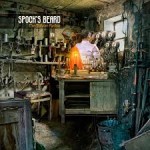 Their twelfth album has verything we’ve come to expect from a Spock’s Beard record; swirling Mellotron and Hammond organ, blasts of hard rock guitar, rich layered vocal harmonies, and a strong sense of melody. Spock’s Beard again succeed by having one foot in the past and one in the present; creating a delightfully retro sound with a modern sensibility.
Their twelfth album has verything we’ve come to expect from a Spock’s Beard record; swirling Mellotron and Hammond organ, blasts of hard rock guitar, rich layered vocal harmonies, and a strong sense of melody. Spock’s Beard again succeed by having one foot in the past and one in the present; creating a delightfully retro sound with a modern sensibility.